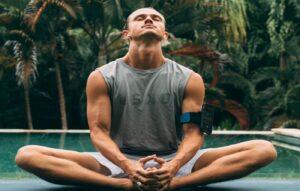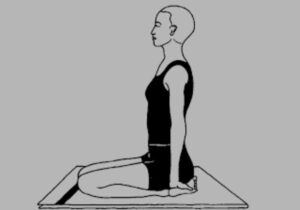Vrischikasana (Scorpion Pose): How to Practice, Benefits and Precautions
Vrischikasana, or Scorpion Pose, is a powerful combination of strength, flexibility, and balance that is unique to advanced yoga. This posture, named for the scorpion, is renowned for its powerful backbend and the inversion that tests even the most experienced yogis. Though it requires time, dedication, and careful execution, Vrischikasana is a very doable and satisfying asana. This blog post will go over how to do Vrischikasana, its many advantages, and the necessary safety measures you should take before attempting this difficult pose.
How to Practice Vrischikasana (Scorpion Pose)
Preparatory Poses
It’s important to prepare your body with poses that strengthen and lengthen the shoulders, core, and back before trying Vrischikasana. Here are a few warm-up positions:
- Adho Mukha Vrksasana (Handstand)
- Pincha Mayurasana (Forearm Stand)
- Urdhva Dhanurasana (Wheel Pose)
- Eka Pada Rajakapotasana (One-Legged King Pigeon Pose)
Step-by-Step Guide
1. Begin with Pincha Mayurasana
- Assume a plank posture for your forearms, keeping your elbows shoulder-width apart.
- As you slowly bring your feet up to meet your body, raise your hips to form an inverted V.
- Using a firm core, raise both legs slowly and bring yourself into a forearm stand (Pincha Mayurasana).
2. Align and Balance
- Use the forearm stand to regain your balance. Maintain eye attention between your hands while contracting your core muscles.
- Before moving on, get comfortable in this position.
3. Enter the Backbend
- After you’re stable, start to arch your back and let your legs come up towards your head.
- Try to maintain a broad chest and robust, stable shoulders.
- As you inhale, gradually allow your feet to come closer to your head, extending the backbend.
4. Final Position
- Ideally, your feet should touch or hover over your head, resembling the tail of a scorpion, as your comfort level and flexibility increase.
- Hold the stance for a few breaths, making sure your breathing is steady and fluid.
5. Disengage Safely
- To release yourself from the stance, slowly bring your legs back up to their original position.
- To relieve any tension, slowly return one leg to the mat, then the other. Then, relax in the child’s pose, or balasana.
Benefits of Vrischikasanav (Scorpion Pose)
Physical Advantages
1. Sturdiness and Flexibility
- Your arms, core, and shoulders will all get stronger after doing Vrischikasana.
- It promotes extraordinary spinal flexibility, which keeps the back strong and flexible.
2. Balance and Coordination
- This pose sharpens your coordination skills by requiring a high level of proprioception and balance.
3. Improved Circulation
- Vrischikasana’s inversion feature stimulates blood flow to the brain, which improves blood circulation and helps to refresh the mind and focus.
Mental and Emotional Benefits
1. Mindful Focus
- Vrischikasana’s intricacy necessitates whole mental focus, which promotes mindfulness and mental clarity.
2. Overcoming Fear
- Mastering Vrischikasana’s inversion and deep backbend can provide a strong sense of accomplishment, which can assist in boosting confidence and lessen fear.
Precautions and Contraindications
1. Warm-Up
- Make sure your body is well warmed up, paying special attention to your back, shoulders, wrists, and core.
2. Avoid if Injured
- This position should be avoided by those with injuries to the neck, back, shoulders, or wrists. In case you have any medical conditions, always get advice from a healthcare expert.
3. Use a Wall
- To avoid falls and provide extra support, beginners should practice against a wall.
4. Listen to Your Body
- Don’t push yourself into the position. Pain should be seen as a cue to quit, and strength and flexibility should be built gradually.
5. Practice Under Supervision
- If this is your first time doing Vrischikasana, it is strongly advised that you practice under the supervision of an experienced yoga instructor.
Join yoga in rishikesh
In addition to being a physical test, Vrischikasana (Scorpion Pose) is a profound exploration of patience, perseverance, and self-belief. This beautiful asana can become a game-changing addition to your yoga arsenal with committed practice, thoughtful preparation, and observance of safety measures. Accept the challenge and learn about the non-physical benefits that enhance your mind and spirit as you progress toward holistic well-being.
Learn to know more about scorpion pose so you can join yoga teacher training in rishikesh and 200 hour yoga teacher training in rishikesh and 300 hour yoga teacher training in rishikesh




